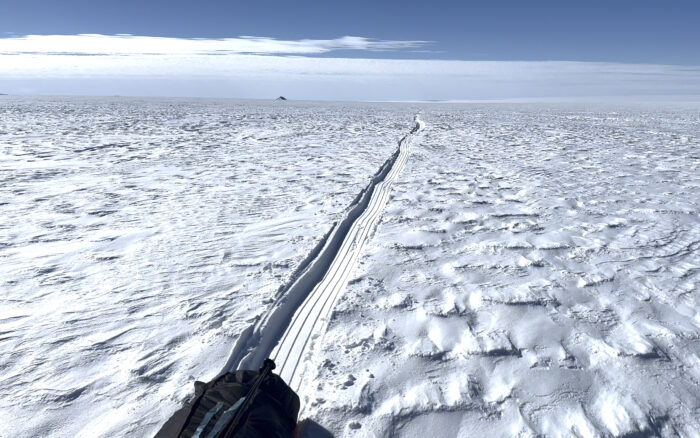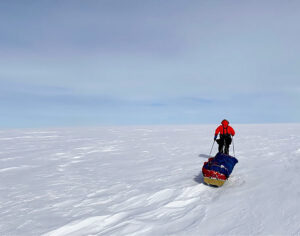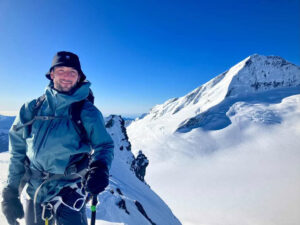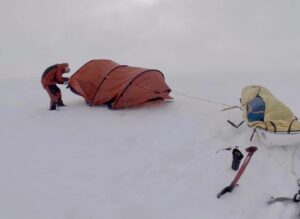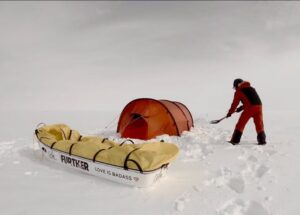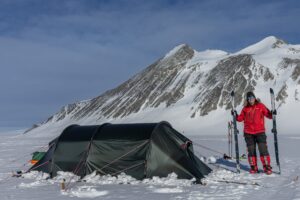For 13 years, Norwegian adventurer Christian Eide held the record for the fastest solo, unsupported ski journey from Hercules Inlet to the South Pole. While some Antarctic records can be seen as “the least slow in a limited pool of competitors,” Eide’s achievement was considered elite. New contenders attempted to break it every few years, but snow conditions often hindered their efforts.
However, in January, French adventurer Vincent Colliard surpassed Eide’s 2011 time of 24 days, 1 hour, and 13 minutes. Colliard completed the 1,130km journey in 22 days, 6 hours, and 8 minutes.
For the past decade, Colliard has been mentored by renowned Norwegian polar traveler Borge Ousland. Together, they have crossed nine of the world’s 20 largest ice caps. Colliard had also guided last-degree expeditions to the North and South Poles, skied other parts of Antarctica, and made the first unsupported winter crossing of Spitsbergen with his wife, Caroline Cote.
Breaking Eide’s time was a tough ask, though. In 2011, Eide was running an expedition company. In the 12 months prior, he had skied across Greenland twice, and just before starting from Hercules Inlet, he climbed Mount Vinson and skied the Last Degree. Like many Norwegians, he had been cross-country skiing since childhood.
Colliard trained hard, too.
“I spent six months training like a professional cross-country skier. South Pole for breakfast, lunch, and dinner,” he told Explorersweb.
There was also extra motivation, as his wife was pregnant: “I became a dad upon my return. So I had no choice, now or never. That gave me extra power.”
A last-minute competitor
Adding some drama, controversial American adventurer Colin O’Brady announced his bid for the speed record just a day after Colliard flew south.
Colliard began his journey from Hercules Inlet on December 20. In the first week, he averaged around 30km per day, 17km per day behind Eide’s pace. During that same week, O’Brady fell into a crevasse just six kilometers from the start and abandoned his attempt soon after.
Fighting the doubts
When the Frenchman passed the Thiel Mountains, he told his expedition coordinator, Lars Ebbesen, that he might abandon the journey if the whiteouts and soft snow persisted. This marked a turning point, however. By the end of the year, Colliard was pushing hard, completing four consecutive 50km+ days. Then he extended the streak to a full week, and by day 15, he was about 37km ahead of Eide’s pace.
Although Colliard was now making impressive progress, he was acutely aware of the physical toll.
“I’m really pushing my body to the edge,” he said in an audio update on January 3. “I think it is a fine line between failure and success. I have nine days to reach the South Pole.”
The final stretch
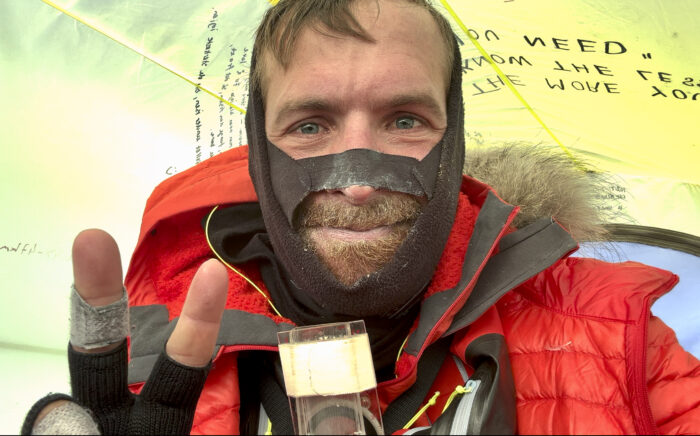
A tired-looking Vincent Colliard in camp, with tent markings used for motivation visible. Photo: Vincent Colliard
A week later, Colliard and Eide were neck-and-neck. On day 21, the Frenchman passed the 1,000km mark, pulling ahead by about 40km. But their average speeds were identical, Eide had surged to the finish in 2011, covering 190km in the final three days to storm across the line.
To stay motivated, Colliard wrote Eide’s kilometer markers on the inside of his tent. Instead of relying on a final sprint, Colliard’s strategy was to gradually build a small advantage.
“I wrote Christian’s kilometers on the inside of my tent and wrote all my days on the other side so I could compare…I tried to do just a little bit more than him, to accumulate, to get a buffer,” Colliard told Explorersweb in a post-expedition interview.
The strategy paid off. Colliard averaged over 50km per day, completing the journey on Jan. 11, 2024. He finished just shy of two days faster than Eide, and the record had finally fallen.
In the Frenchman’s mind, it wasn’t a done deal until the Amundsen-Scott South Pole station was in sight.
“I had doubts all the way to the end as I thought my body, especially feet and hips, would shut down,” Colliard said.
While Antarctic speed records are typically less significant than more exploratory expeditions, the difficulty of Eide’s benchmark makes Colliard’s new record deserving of a place in our top 10 expeditions of 2024.

